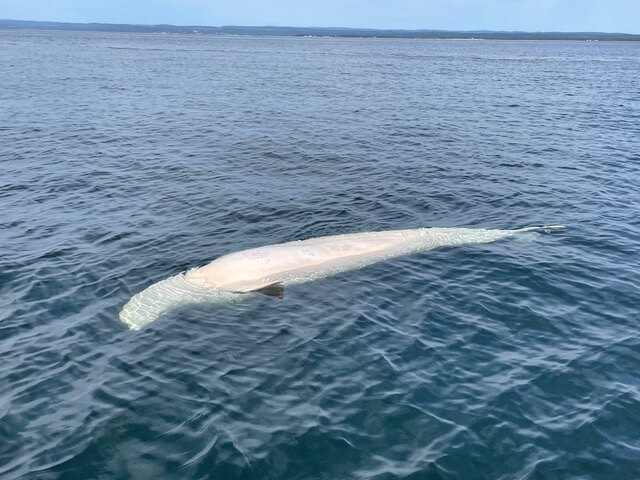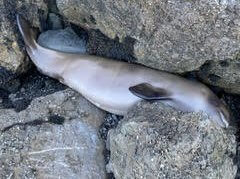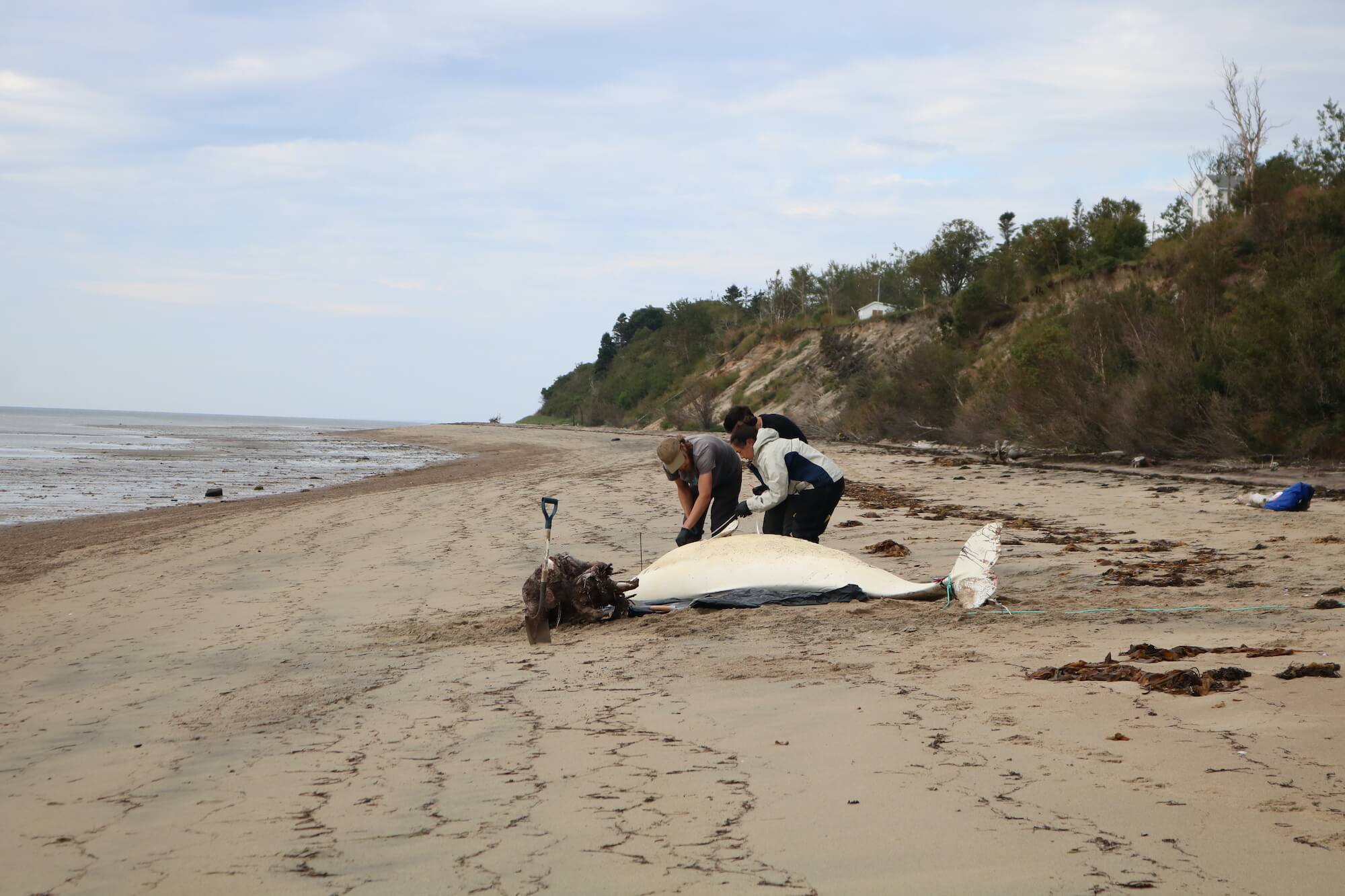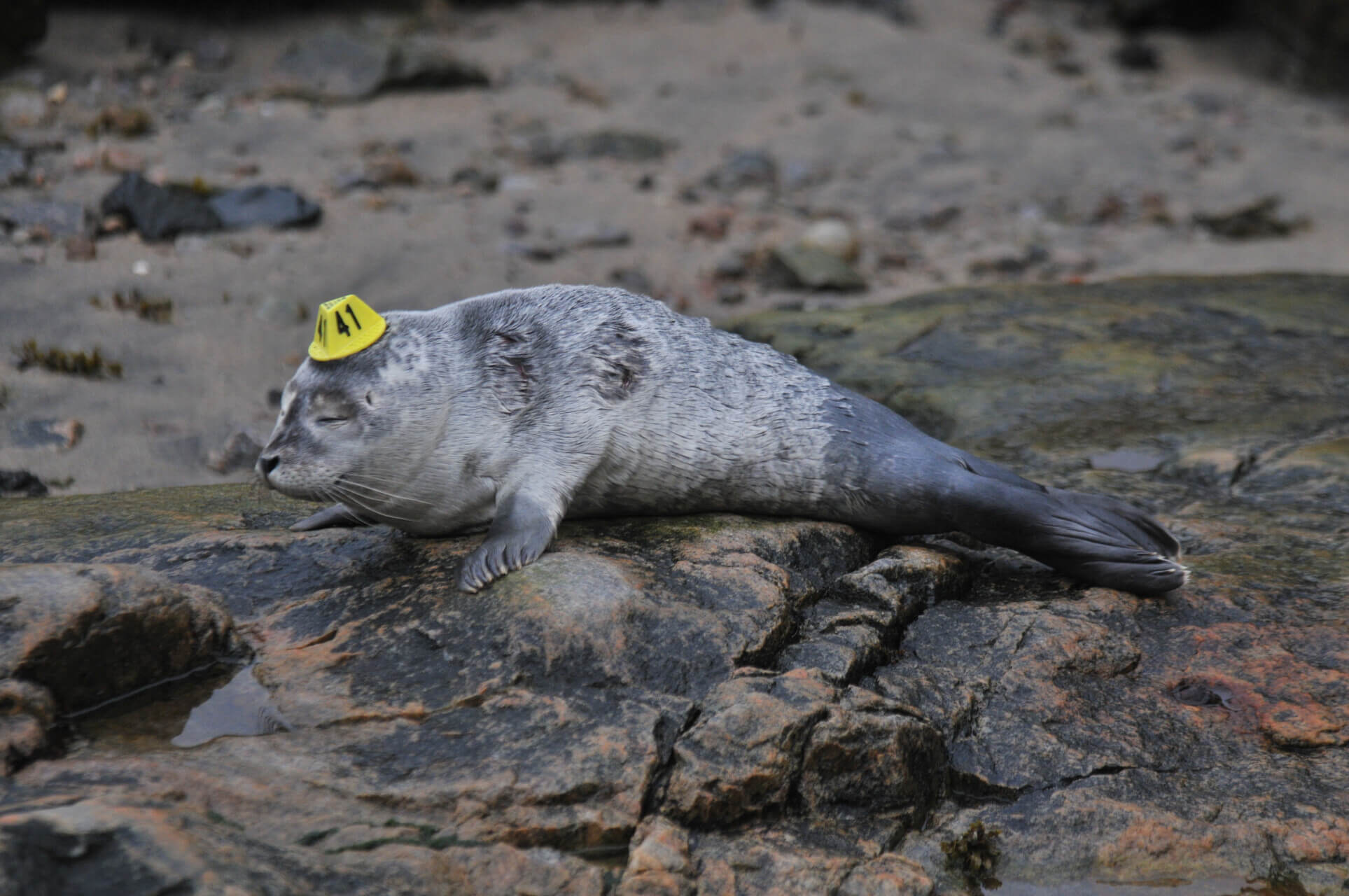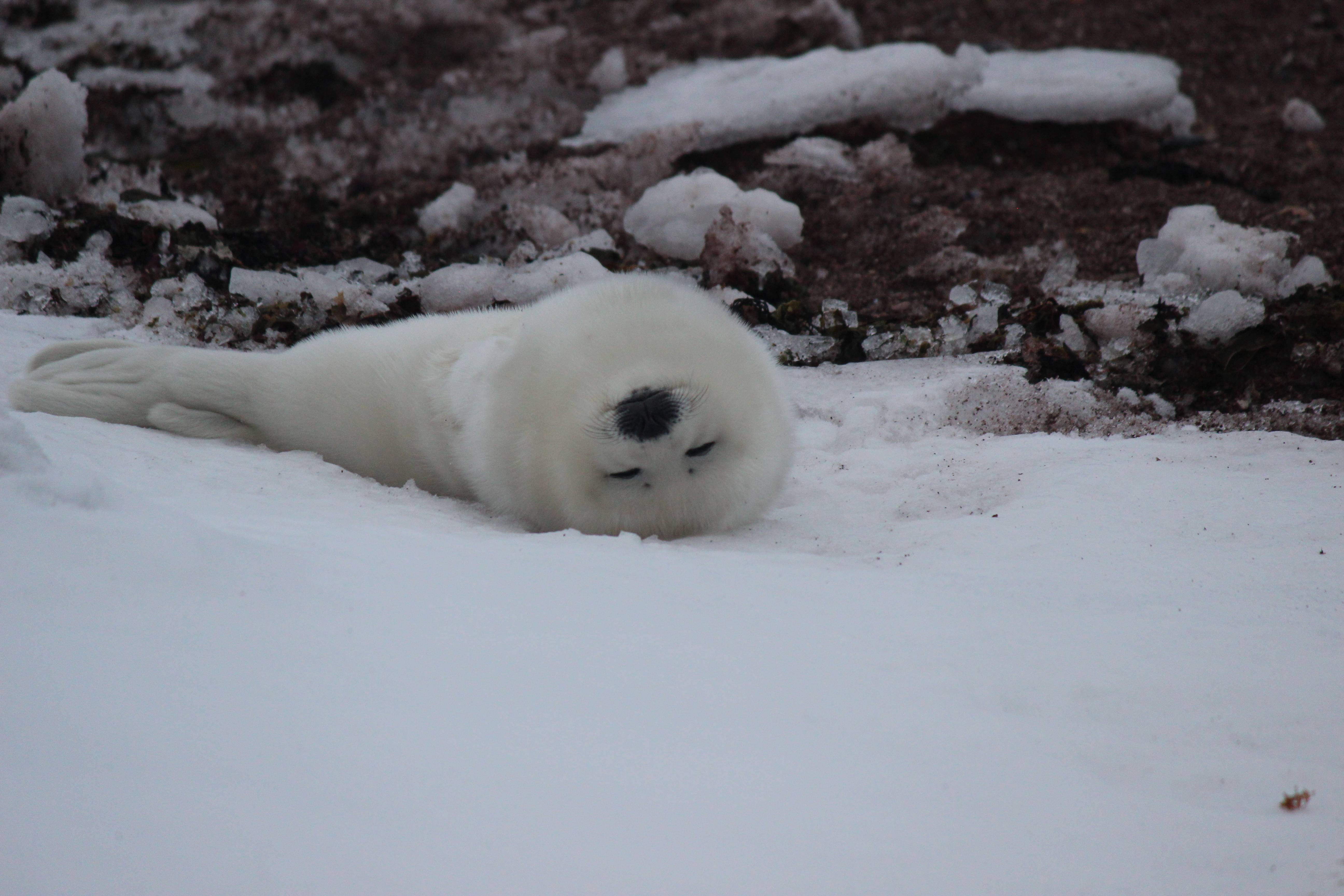2021 will be no exception. Once again, researchers and specialists are concerned by the mortalities being observed in the St. Lawrence beluga population. In 2021, 19 beluga carcasses were reported and examined on the shores of the St. Lawrence as part of the carcass monitoring program conducted by the Quebec Marine Mammal Emergency Response Network. (QMMERN). “Unfortunately, we’re still seeing a lot of neonatal mortality this year. This is a trend that has been observed over the past decade and which continues,” worries Robert Michaud, QMMERN coordinator and scientific director of the Group for Research and Education on Marine Mammals (GREMM).
19 individuals found
Between March and December 2021, 19 beluga carcasses were found stranded and sampled on the shores of the St. Lawrence, including one on Prince Edward Island, which is outside the species’ usual range. By way of comparison, there were 14 in 2020, 17 in 2019, 12 in 2018, 22 in 2017 and 14 in 2016.
“In 2021, the number of carcasses found stranded is higher than the median of the past 39 years, which is 14,” points out Stéphane Lair, professor at the Université de Montréal’s Faculty of Veterinary Medicine.
Eleven of the 19 carcasses were stranded in the Bas-Saint-Laurent region, 4 in Haute-Côte-Nord, 2 in Gaspésie and 1 in Charlevoix. Eight of these were able to be transported for the purpose of undergoing a necropsy.
It is important to bear in mind that these figures do not reflect the total mortality in the population, but rather the number of individuals found dead that could be sampled or necropsied. Carcasses reported adrift, not found and not sampled are not included in the tally, namely to avoiding double-counting. Sampled carcasses contain a wealth of information that can help better understand the dangers that threaten the fragile population of belugas in the St. Lawrence.
Calves and newborns overrepresented
Of all the individuals found stranded in 2021, 10 were adults. Even if this number is equal to the median of the last 39 years, this is not the case for calves. “Once again, the number of first-year calves (6) found stranded is higher than the median (1) of the first 25 years of this program (1983 to 2007). However, it is similar to the average (6.3) and the median (6) between 2008 and 2020,” explains Mr. Lair. Clearly, the excess mortality of calves is a phenomenon that has been present for ten years already.
Another problem is dystocia, i.e. a death that coincides with calving. In a report on beluga mortalities occurring between 1983 and 2012, Mr. Lair’s team concluded that, since 2008, calving difficulties had become the most important cause of mortality for adult female belugas in the St. Lawrence. This trend continued in the years that followed. And in 2021, two of the females discovered were found to have suffered from dystocia.
Causes still unknown
“There are a number of hypotheses to explain this excess mortality,” specifies Robert Michaud. “For example, it is possible that female belugas are not physically fit enough or that they lack the necessary energy reserves to give birth, in which case excess neonatal mortality might be attributable to a decline in available food resources. Also at play may be the neuro-toxic effects of certain bromine-based chemical contaminants, which can impact the health of both mother and newborn.”
In a scientific review devoted to the St. Lawrence beluga, Fisheries and Oceans Canada researcher Véronique Lesage listed “competing, although not exclusive, hypotheses for the observed high calf mortality and change in the demography of the [St. Lawrence Estuary] beluga population, [including] health problems or impaired reproductive functions from the toxic effects of specific chemical compounds on endocrine and immune functions; perturbation of critical activities (e.g., parturition and foraging) from chronic vessel exposure or isolated or repeated disturbance; fishery- or climate-related changes in ecosystem structure leading to a decrease in habitat quality and prey availability or quality; and recurring stochastic events such as harmful algal blooms.” Scientists therefore still have their work cut out for them to identify the dangers to which belugas are exposed.
Chérubin gone to the angels
Whenever the condition of the carcass and the presence of distinctive markings allow, GREMM researchers attempt to put a name on individuals that are found stranded. In 2021, only one such beluga could be identified, namely DL105, who was nicknamed ‘Chérubin‘ by the sponsors who had adopted it in 1990. This 30- (or so) year-old white male has been known to GREMM since 1989, but had not been observed in the Estuary since 2015. His carcass was found in April 2021 near Cloridorme in the Gaspé Peninsula. What adventures did he experience between these two observations? That remains a mystery…




